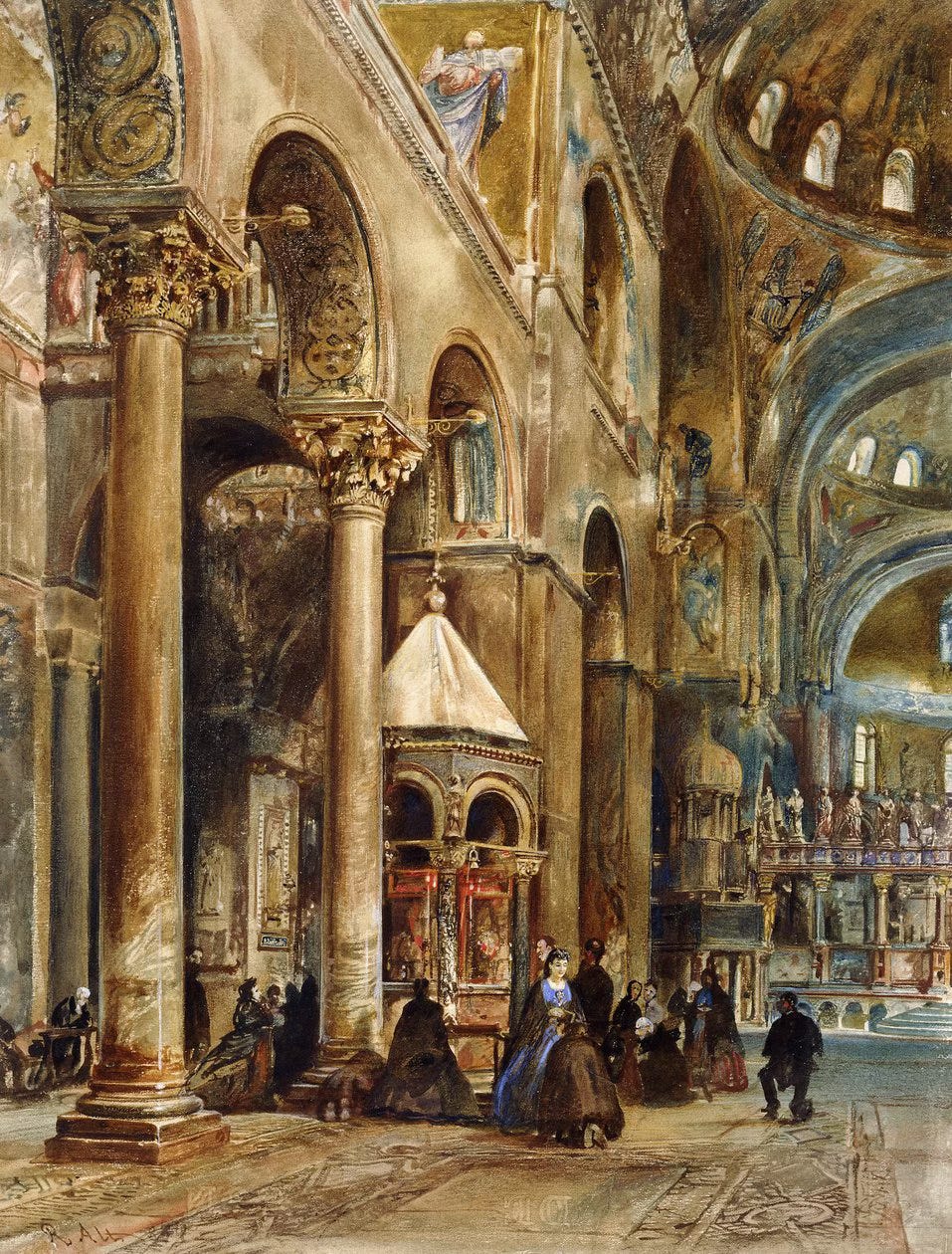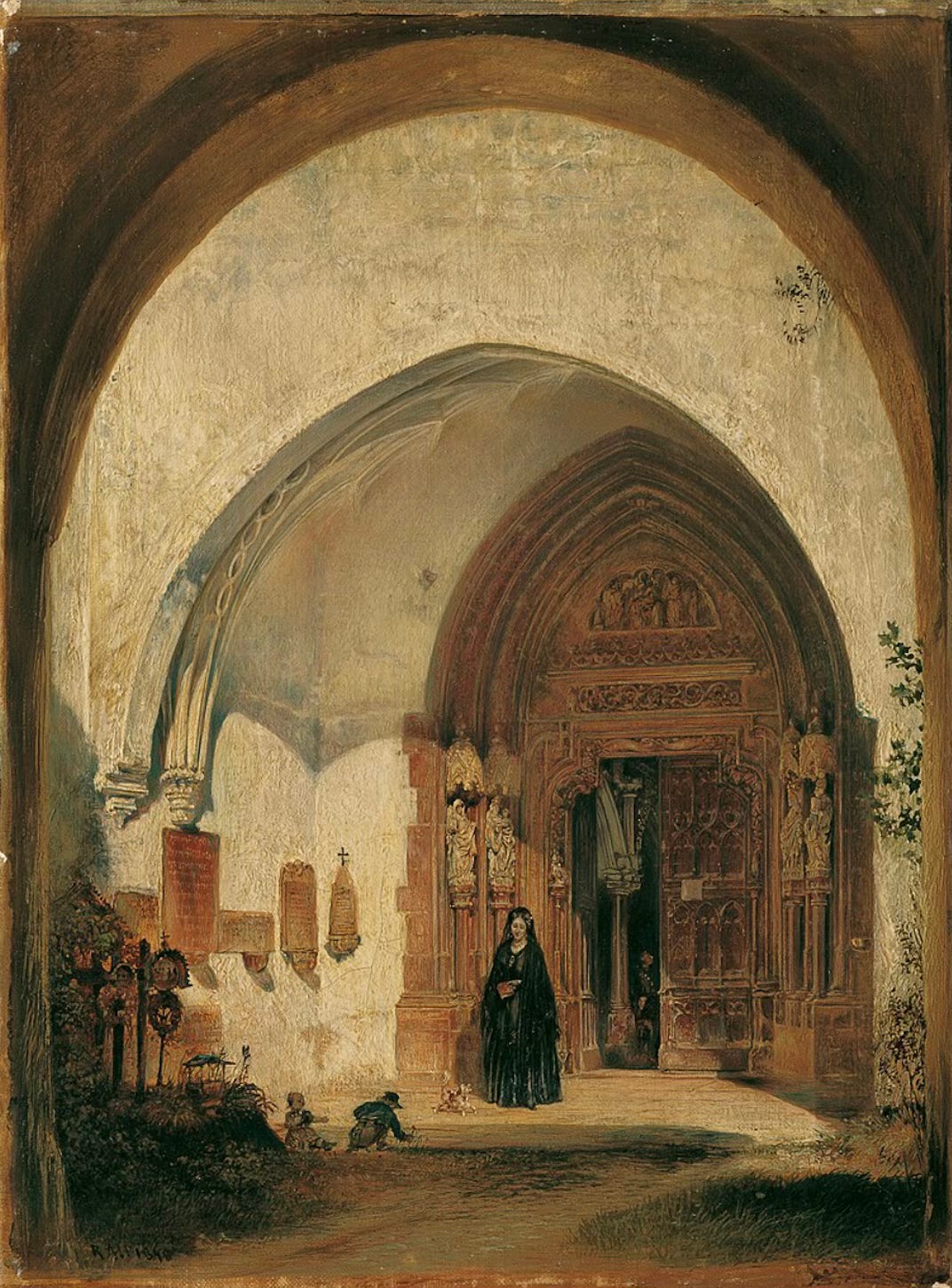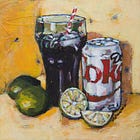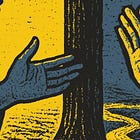Rituals of Becoming
Three Ways of Thinking About Ritual
At one point early in the Obama administration, I sat in on a temple preparation class in a ward in northern Virginia. It was a small class, around half a dozen people, all of whom were more or less peers in age and profession. The temple preparation course materials assured class members that going to the temple is wonderful, while avoiding details about what is actually done there. There is little in the curriculum about the endowment, washings and anointings, and sealings. One member of the class—a new convert in her twenties—finally simply begged the teacher to tell her exactly what the endowment was. I’m paraphrasing, of course, but she asked, in near desperation, "But what exactly does it do? What will I be doing when I’m doing it?”
The teacher was clearly uncomfortable with the question, perhaps in part because he didn’t want to discuss the confidential parts of the endowment ceremony, but also because he simply didn’t have much of an answer. I can’t blame him. There is a culture of silence around the temple, to be sure. But I think a fair amount of the hesitation emerges from the fact that Church members generally aren’t well equipped to talk about ritual. That lack can be traced to the Church’s roots in American Protestantism.
A better grasp of ritual can transform how we think about what it means to be a religious person, because it can transform what we understand religion—and particularly Mormonism—to be.
Ritual connects us to other people in the present and the past. The rituals of Christian worship connect Christians present to Christians past, transcending time and space through repeated behaviors. Ritual makes Mormonism collective rather than individualist, and that can change everything.
Suspicion of Ritual
The Protestant Reformation was born in Martin Luther’s complaint that Catholic rituals were empty and meaningless. Instead, Luther believed that reading the Bible generated a personal relationship with God. This shift left Western Christianity with at least two inheritances.
The first is a generalized sense that ritual is weird. Unfortunately, Luther’s ideas were more than a little informed by his anti-Semitism. He, and generations of Protestants after him to this day, read about the elaborate descriptions of rituals, sacrifices, and holidays in the early books of the Bible and called them primitive. These Protestants told each other that priestly vestments and chanting were more than a little weird and backward. Rituals were crutches for morally underdeveloped people, and after Jesus came, he replaced ritual with living a moral life. (This argument, of course, ignores the fact that the New Testament describes Jesus’s family and followers engaging in ritual worship of the sort that made these Protestants itchy.)
The second is this: There are scholars who argue that Luther’s reorientation of Christianity toward each person’s apprehension of God gave birth to modern Western individualism. And to boil down a complicated five hundred years since Luther and a great deal of scholarship on the question, this has left contemporary Westerners with the sense that Christianity is primarily about ethics. By that I mean that religion exists to teach individuals to obey a set of presumably moral propositions, from sexual restraint to regular reading of scriptures, with the vague sense that doing so will please God.
The Protestant traditions that have been the most successful in the United States—Baptists, most Methodist churches, and the welter of Christians who call themselves “nondenominational”—all tend to repeat the rather confusing cliché that Jesus “did away with the law of Moses,” emphasize the importance of correct behaviors, and simplify Christian worship as much as possible. That is certainly the case in the Mormon movement. The modern Church of Jesus Christ of Latter-day Saints has adopted the plain style for its Sunday services—very little art, no special clothing, plain music, and certainly no statues or chanting or what a professor of mine once called the “smells and bells” of Roman Catholicism or the Orthodox churches.
Of course, there remain rituals in the Church. Baptism, the Lord’s Supper (which Latter-day Saints call “the sacrament”), and the rites of the temple—endowment, sealings, washings and anointings, and baptism for the dead.
But the way Saints talk about these rituals tends to fall along three lines. The first is to emphasize that they are ways of making covenants with God; that is, they are related to obeying moral codes. The second is that they are symbols. The third is that it’s quite important to do them. What that young convert asked—what is important about making covenants in precisely these ways—often goes unanswered.
I don’t think these three lines of thinking are wrong, inherently. But I do think they’re incomplete and tend to lead Church members to overemphasize the notion that religion is just ethics.
Ritual as Symbol
The temple preparation class manual called the rituals performed in the temple “symbols.” By way of example, the manual pointed to the fact that in the United States, a red octagon means “stop.”
In this view, rituals are like writing, and the things you do in rituals are like words on a page. This symbol means the A sound and this symbol means the N sound and this symbol means the T sound, and if you know that, you see the word “ant.” Just so, the various elements of the endowment—the sacred clothing worshipers wear, the gestures they do, and so on—each have a meaning, and if you know what these meanings are, the endowment turns into a sentence that conveys information.
This style of interpretation turns religion into a textbook. Once you understand what all the symbols mean you can read it. On its face this way of understanding ritual seems unnecessarily complicated—if this piece of clothing or that phrase in the endowment is a reference to Jesus, why not simply say Jesus?—but it can have some compelling power, a bit like metaphor or simile in poetry.
When Emily Dickinson says that “Hope is the thing with feathers /That perches in the soul,” the invocation of the bird adds unexpected color and nuance to what it is to experience hope; it helps us see what hope is in new ways. And it’s the same when we think about Jesus as sacred clothing that covers us, or as a password that can usher us into heaven, or other surprising possibilities.
However, there are also dangers in concluding that ritual is simply an alphabet where thing X represents some other thing Y. Here are two. The first is that in fact poetry and the Bible are far more meaningful and powerful when thing X might mean six or fifteen or thirty-seven things. Or maybe thing X actually means nothing at all, but simply evokes feeling, mood, or attitude.
The second danger is related. Transforming ritual into a simple set of symbols that each participant should interpret turns ritual into something like a math assignment in which you have to solve for a certain variable. And that, in turn, contributes to a vision of religion in total as something like a school, with assignments that must be completed and grades that will ultimately be given at the end.
But there are other ways to think about ritual, and hence, other ways to think about religion.
Ritual as Shopping
In Romans chapter 7 the apostle Paul makes a complaint that should be familiar to all of us. He says that even though he knows what the right thing to do is, he often does the wrong thing, and he’s not sure why. I feel the same way every time I stay up too late. And so do all of us, when we make a bad choice that was obviously bad to begin with.
I think Romans 7 can fundamentally transform for Latter-day Saints what it means to be a Christian. Oftentimes the rhetoric of the Church—from general conference addresses to lesson manuals—focuses on the right thing to do, with the implied assumption that knowing the right thing to do means that we will therefore do the right thing. But, as Paul understands, a lot of human nature, and a lot of the decisions we make, occur at levels far below the knowing.
And if that’s true, then perhaps the purpose of religion is not simply to discipline us into doing the right thing. The purpose of religion may involve finding ways to cope with the fact that we so often do the wrong thing. Religion’s purpose may be to find new ways to understand who we are.
And that’s another way to think about what it is to do ritual.
Humans decide what we want or what we believe for reasons that have little to do with information. If your social media feeds vehemently embrace the politics of Kamala Harris, you’ll likely be swayed that way too—and anybody who has been on social media knows that most fights there are constructed of people scrounging for facts that bolster how they already feel. Nobody thinks advertising works on them, but everybody associates Subarus with cool hikers and their amusing dogs. The point of advertising is less to make you decide to buy a product than to link a product with certain feelings—beer is fun, trucks are adventurous, technology is liberating. Advertising works on your heart, not your head.
And so does ritual. It may be a mistake to view ritual as a symbol, something to be interpreted. Rather, ritual is how we create who we are.
In his book Desiring the Kingdom, philosopher James Smith defines ritual as actions that shape how we feel—and not simply our passing feelings, but how we love, desire, fear, or want.
He points out that ritual is everywhere in our lives, and that it teaches us how to be human. For instance, shopping is a ritual. Shopping trains you to believe that your identity is something that you shape by consumption, and that your fears and hungers are things that can be solved by buying. Most of all, shopping trains us to believe that we build our identities through picking and choosing. And that life is simply a collection of decisions about what sort of car to own and what sort of job to have, all choices laden with the burden of expressing who we really are.
And if that’s true about us, then, in fact, maybe religion is nothing more than ethics, a set of moral expectations that try to put boundaries on the picking and choosing that shopping teaches us life is.
Or, perhaps, Christian ritual is a way to teach us that religion is not just ethics, and that life is not shopping.
Ritual as Belonging
There’s a long dispute within Christianity as to whether rites like baptism or the Lord’s Supper should be called “ordinances” or “sacraments.” Roman Catholics use the second term, which derives from Latin and means something like “holy”or “to consecrate.” To Catholics, sacraments are a moment in which God enters the world to do something. Baptism actually dispels sin; the bread and wine become a vessel for the real presence of Christ. Many Protestant groups prefer the word “ordinance” because they believe that such rituals are rites of commemoration only, done because Jesus ordered us to do them to remember him.
Latter-day Saints use the terms in a rather eccentric way, and don’t appear to have firm positions on the precise metaphysics that underlie this terminological fight. But these ideas help us think about how we might understand ritual in the Latter-day Saint context.
Theorist of ritual Catherine Bell argues that instead of “rituals” we should think of “ritualization.” There are no actions that are inherently rituals; instead there are actions that certain people in certain places call rituals. We use the word to set apart certain actions from other actions in order to signal that we think they are important. We think that certain ritual actions do something, accomplish some sort of work. Bell wants us to think about why we think some work is important enough to call ritual.
The primary work of LDS rituals is to invite us into relationships. Sometimes the word Church members use to describe these relationships is “covenant,” a term that can feel archaic and even legal. Church members often talk about “covenants” as though they are contracts in which each signatory promises something contingent upon the performance of the other, as though the relationship with God established in the temple endowment ceremony is comparable to executing a mortgage agreement.
But I think that sort of interpretation reflects, again, the world of shopping and commerce modern Americans are used to, when in fact the implication of the rituals themselves points less to commercial contracts, in which two people exchange something, than to the establishment of kinships, which are personal relationships that cannot be obliterated even when one party behaves badly. All throughout scripture, after all, God declares that his covenant with his people will never be canceled even if the people violate it. Isaiah 54:10, for instance:
For the mountains shall depart, and the hills be removed; but my kindness shall not depart from thee, neither shall the covenant of my peace be removed, saith the Lord that hath mercy on thee.
The rituals of Latter-day Saint worship, I think, point us in this direction. They don’t exist to give us information that we need to better fulfill a contract. Instead, they invite us to behave as though we are always already in relationships in which we give to each other out of care and kinship.
Latter-day Saint rituals have all sorts of origins—the way we administer the Lord’s Supper mirrors closely how the Puritans performed the act; baptism by immersion, with care to see every part of the body submerged, is drawn from the English Baptists; even the endowment ceremony is genealogically related to the ritual initiation of the third degree of Scottish Rite Masonry.
But what is interesting for our purposes is how Latter-day Saints have adapted these rituals to the aim of forming the Saints to see themselves as members of a community with responsibilities of mutual care. Distributing the bread and water of the Lord’s Supper on trays that we hand to each other in the pews; solemnizing the promises of the endowment and the sealing ceremony through the intimate act of taking each other by the hand; eliminating the markers of distinction through a single uniform clothing in the temple.
All of these things encourage the Saints to understand themselves at the very level of the body as part of a new community separate from the world outside the ritual—a community of common commitment, kinship, and obligation. These are easy words to say. The purpose of ritual, though, is to inscribe these realities on the body.
Matthew Bowman is Howard W. Hunter Chair of Mormon Studies at Claremont Graduate University and the author of The Mormon People: The Making of an American Faith and The Abduction of Betty and Barney Hill: Alien Encounters and the Fragmentation of America.
Art by Rudolf von Alt (1812-1905).













More of this! More tools to consider what it is we're engaging in through rituals, ordinances, and sacraments (sometimes all at once)!